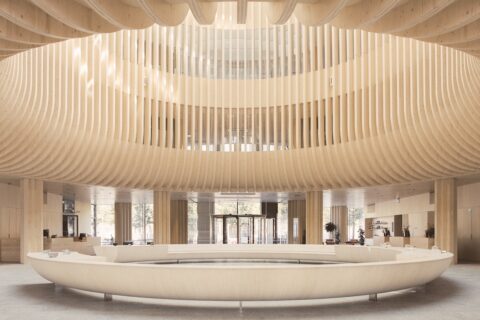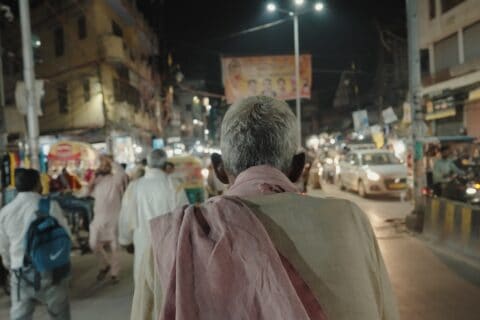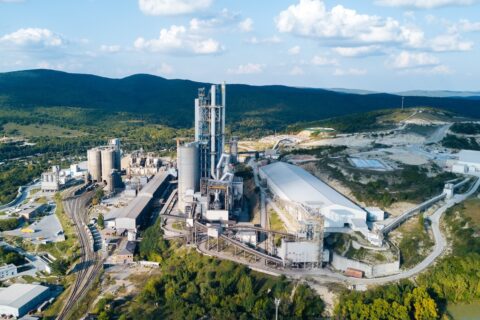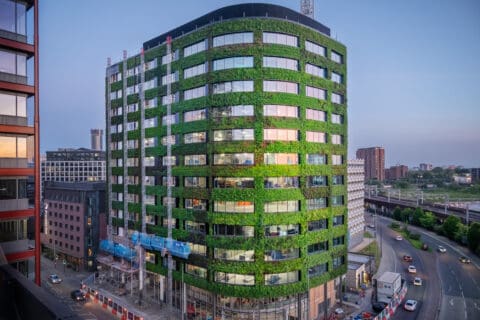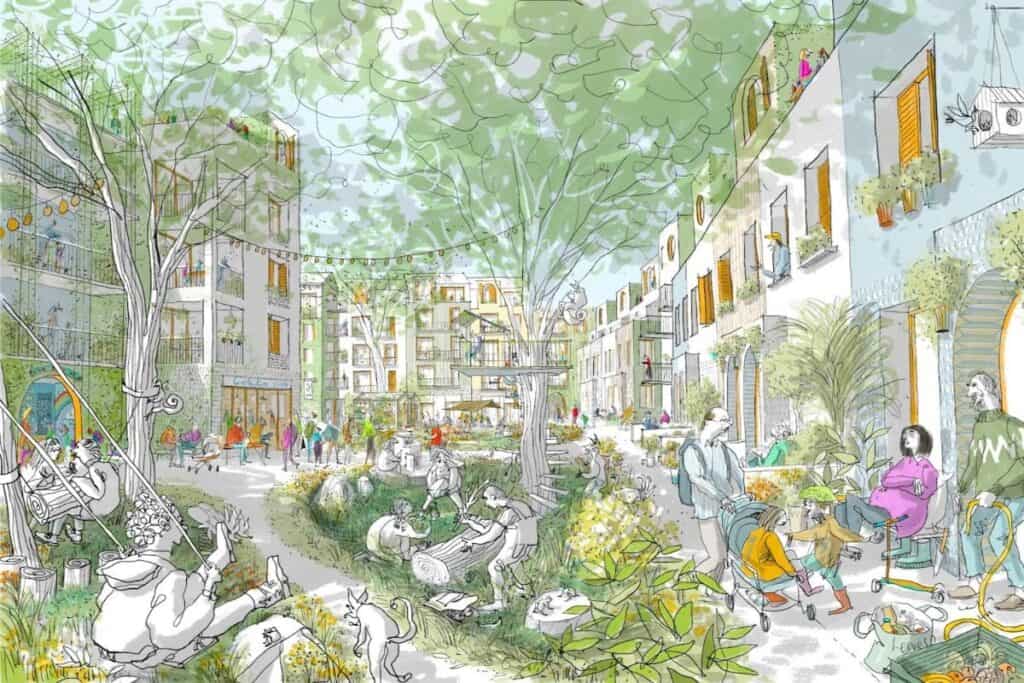
In a win for sustainable placemaking, planning permission has been granted for what could be the biggest timber-structure neighbourhood in the UK, built around a culture of shared living in East Sussex.
One year after proposals were announced for transformation of a 7.9-hectare brownfield site, the Phoenix development has been granted outline planning permission, plus full planning for the first buildings.
Designed to prioritise people over cars, the riverside estate has been conceived by developer Human Nature to prioritise community and be built and operated on circular principles.
This pioneering project promises huge biodiversity net gain, delivered on a former industrial site in Lewes, located within the South Downs National Park.
The mixed-income, multi-tenure development will provide 685 homes (with 30% affordable – made up of 154 homes at local housing allowance levels and the remainder as First Homes).
When complete, the Phoenix is set to become the UK’s largest timber-structure neighbourhood, providing a blueprint for sustainable placemaking and social impact that can be deployed at scale.
Radical sustainability, not self-denial
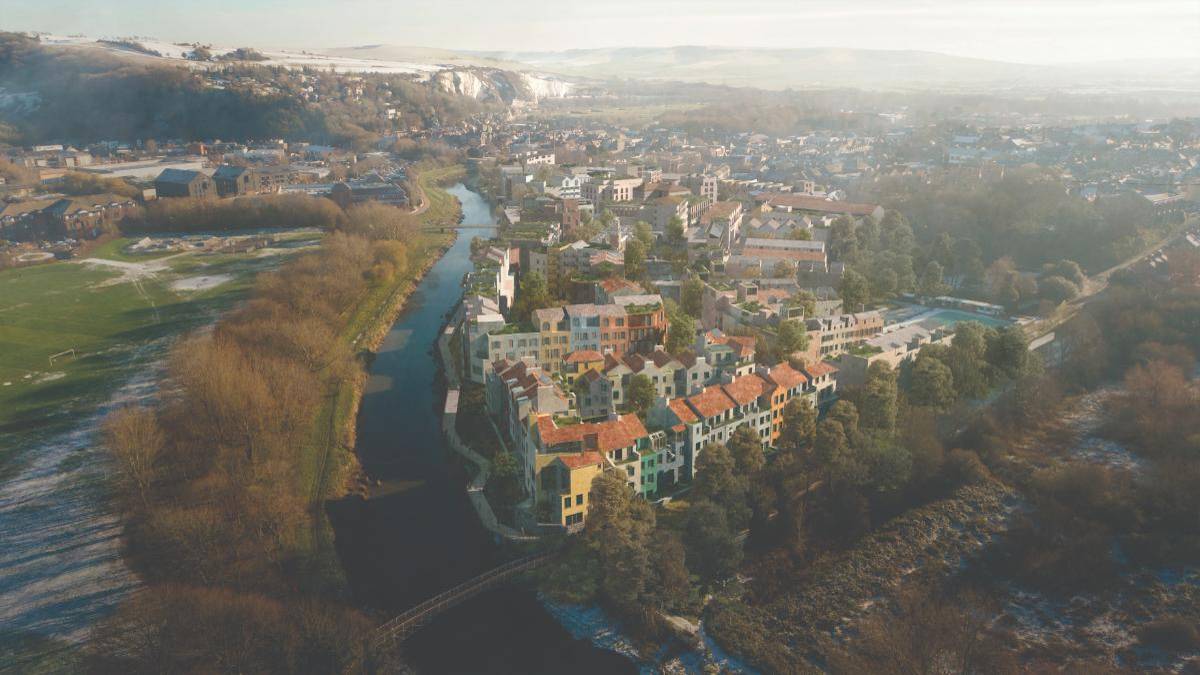
The project has been brought forward by Human Nature, a campaigning development company that designs, builds and manages sustainable places, which respond to the crises in climate, nature and health.
Delivered in collaboration with 12 architects, the vision for the Phoenix will see the transformation of a neglected industrial landscape into a bold new template for 21st-century town living.
The Phoenix was masterplanned by Human Nature’s in-house design team, regenerative design agency Periscope, and Kathryn Firth, director of masterplanning and urban design at Arup.
This is not your typical development, says Jonathan Smales, Founder and CEO of Human Nature:
“The mainstream model of development is catastrophic, baking in deeply unsustainable fabric, infrastructure and transport, fuelling the climate and nature crises; it also creates social divisions and exacerbates loneliness. We aim to show living sustainably can be a joy, not an exercise in self-denial, made far easier by the design of neighbourhoods.“
Such sustainable placemaking will be radical, but only in a good way, he adds:
“The result won’t feel unfamiliar, rather a return to traditions we’ve forgotten: a place of elegantly designed buildings made using local materials, streets safe for children to play in, with most daily needs met within a short walk.”
Template for the towns of tomorrow
An emphasis on building connections and enabling interaction in shared spaces and facilities runs through the design of the Phoenix. The aim is for residents to find it easy to meet and socialise together.
In addition to highly energy-efficient homes powered by renewables, the neighbourhood includes public squares and gardens, community buildings (including a low-cost canteen) and a site-long river walk.
A co-mobility hub will incorporate electric-car share, car hire and car club, electric bike service and a shuttle-bus facility. This is designed to enable a shift away from reliance on private vehicle ownership and help create safe streets for walking, cycling and wheeling.
In Parcel 1, the first homes designed in detail by Ash Sakula Architects will be interwoven with play areas, communal garden plots and a shared cycle store.
Created in collaboration with Periscope, a central courtyard gives residents a place to sit, pause, talk and play. It also incorporates a rain garden, providing protection against flooding.
In the wider plan, climate-progressive innovations include a data-driven renewable energy system set to enable 10–20% reductions in residents’ energy bills, on-site recycling, waste-management and composting facilities, plus a strategy for urban farming and community gardening.
Positive climate-ready provisions at the Phoenix will actually show how sustainable living can make for a better life, suggests Meredith Bowles, principal, Mole Architects:
“While the rest of the world is carrying on as if everything is normal, Human Nature thinks that we have to build in a way that will allow us to live differently in a less hospitable world. But rather than seeing this as a constraint, the Phoenix is an opportunity; for sociable living, for local events, for a greener world.“
Circularity and a whole-place carbon footprint
The Phoenix takes a holistic approach to sustainability.
The project aims to set a new benchmark in urban planning by bringing together best practice in modern methods of construction (MMC), sustainable mobility, energy efficient design and landscape architecture, all while providing good homes, jobs, training opportunities and generous public space for the town.
As well as considering operational carbon (emissions from heat and power) and embodied carbon (from materials and construction), the Phoenix has been designed to address a ‘whole-place carbon footprint’. This includes emissions caused by transport and human behaviour on the site all the way until 2100.
Circular-economy principles are also embedded into plans for design and operation.
Where possible, existing materials from the site’s industrial past – including cladding, steel trusses, bricks and buttresses – will be salvaged and repurposed or reconstituted.
The Phoenix’s buildings will then be constructed from engineered timber including CLT (cross-laminated timber), with prefabricated cassettes made from local timber and biomaterials such as hemp. Local apprenticeships will also be trained on site in MMC, one of the ways the project will maximise social impact.
When complete the development will encompass 10,000sq m of service, commercial and employment space in healthcare, light industry, creative business, hospitality and retail.
At the heart of the neighbourhood will be a series of public squares connecting to a community canteen, event hall, taproom, fitness centre, workspace and makers’ studios, much of which will be housed within repurposed industrial structures. Shared courtyards, parks, green corridors and rooftop gardens will enable social interaction, promote communal living and provide habitats for local wildlife.
Collaboration, connection and community
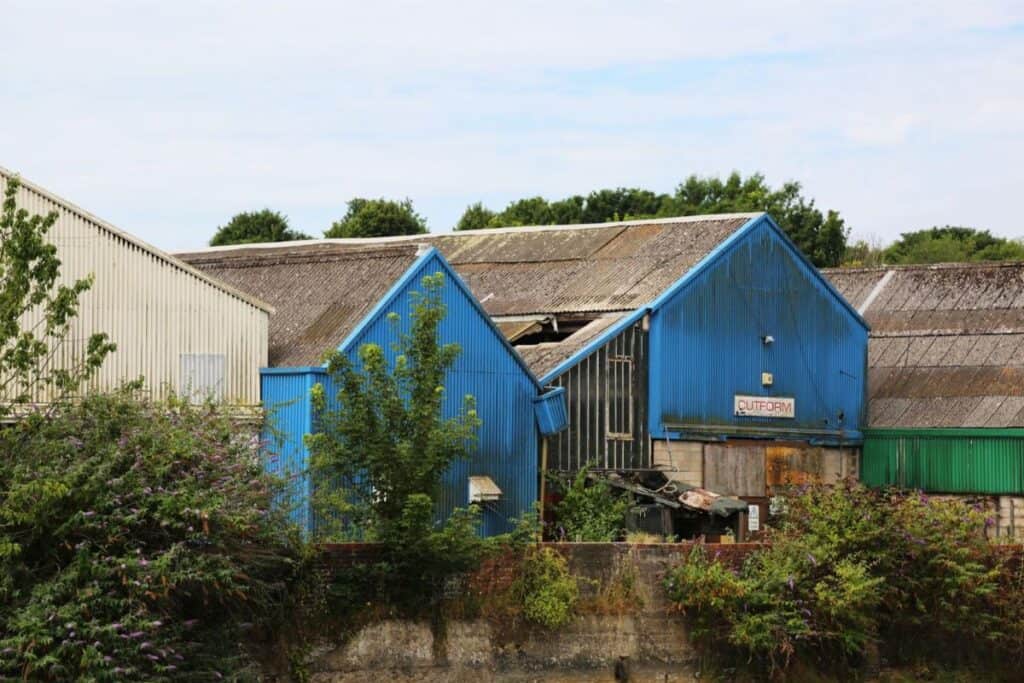
The Phoenix is a trailblazing vision to transform a brownfield site in Lewes into a sustainable neighbourhood, designed for the way we need to live now and in the future. In all of this, collaboration is key.
Accordingly, the Phoenix team have worked closely with thousands of local residents, three dedicated community working groups and more than 60 businesses and stakeholder organisations to evolve the project in response to community needs.
Since the initial planning application was submitted in early 2023, there have been three rounds of consultation, resulting in a number of refinements to the initial plan including the relocation of the proposed neighbourhood Health Centre to a more accessible site in a future phase.
The masterplan has been recognised with the Pineapples Future Place Award, an AR Future Place Award, and a commendation from the Oslo Architecture Triennale Neighbourhood Index.
A Lewes-based company, Human Nature was founded by former Greenpeace directors Michael Manolson and Jonathan Smales. To make it easy and enjoyable for people to live sustainably and well, Human Nature advocates for ‘exponential sustainability’. Exponential sustainability involves practices and initiatives that result in compound acceleration of positive environmental, social and economic impacts over time.
Further Reading:
- More about the Phoenix project; and sustainable-development company Human Nature;
- More about the full development team for the Phoenix, from masterplanning to mobility;
- Also on SustMeme, How regenerative tourism can become a green swan;
- Also on SustMeme, Green building first for smart new Salford design;
- Also on SustMeme, Sustainable luxury for first skyscraper in Greece;
- Also on SustMeme, Toolbox for urban decarbonisation and resilience;
- Also on SustMeme, What is the future for 21st-century housing?
Check out the full archive of stories on the SustMeme Built Environment Channel, Sponsored by Mitsubishi Electric Living Environmental Systems UK.

